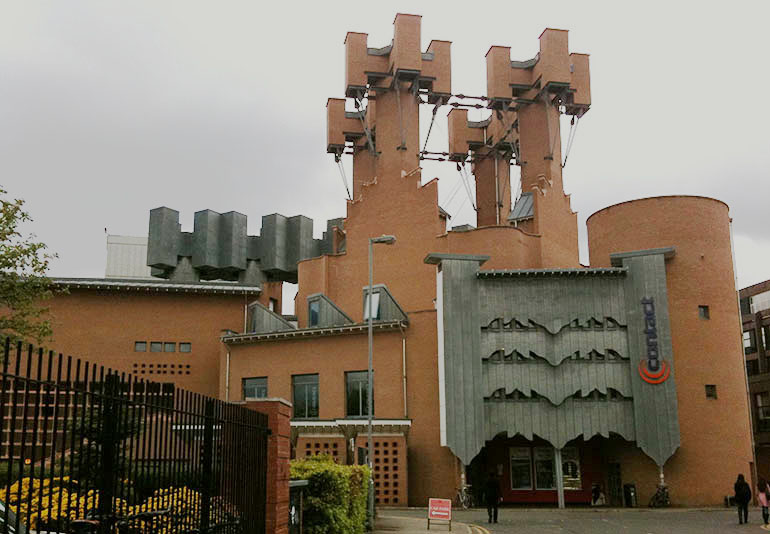Making Contact: arts and sustainability
Speaking in Manchester last week, cultural and environmental experts discussed the steps being taken by cultural organisations to cut their carbon emissions, as well as the potential held by The Arts to influence behaviour in this sector.
Arts and culture have crucial roles to play in sustainable development, leading figures have said.
The event, ‘Making Creative Places Sustainable’, took place at the Contact Theatre on 25 March and was organised jointly by the Manchester Arts Sustainability Team, Julie’s Bicycle, a non-profit organisation that works with the arts and creative industries to prioritise environmental sustainability and Mistra Urban Futures.

The showcase provided an opportunity for Manchester Arts Sustainability Team members and partners to present some of their innovative approaches to sustainability, as well as engage in a debate about how the arts could tackle climate change on a greater scale.
A key outcome of the discussion was that culture should be considered the fourth pillar of sustainable development.
Beth Perry, from the University of Salford and Mistra Urban Futures, said, “We talk a lot about carrots and sticks, but not a lot about inspiration – so what role can culture play in sustainability? The Urban Sustainable Development Goals project is trying to get indicators for urban sustainability at the UN level, and one of those is about strengthening efforts to protect the world’s cultural heritage. Environmental reporting requirements have been written into some Arts Council England grants. Now is the right time to ask questions about how the cultural and creative sector, both formal organisations and community initiatives, might work together to create a cultural union on sustainability.”
Sholeh Johnston from Julie’s Bicycle echoed these sentiments, “In terms of value and influence, arts and culture is being recognised. There’s a movement to put culture at the heart of the Post-2015 Development Agenda.”
Johnston referred to a Wellcome Trust report on climate change and global health. “Culture has been included in that report for the first time,” she said. “It is recognising the potential role of culture to be a driver in harnessing and developing solutions to some of these really big global problems.”
Another fundamental point to emerge from this week’s event was the importance of sharing, learning and communicating best practice across the sector.
“Since we started in 2007 we’ve seen an incredible response from our work in arts and culture, which has rapidly accelerated in the last few years,” said Johnston. “A lot of the work and leadership is coming from communities and networks. And what’s interesting is there has been a shift in values. We’re seeing a lot more generosity, sharing, a lot more transparency with the data, information and experience we gain from this new territory of thinking about what the role of culture is in this profound shift in consciousness that we need to enable [for a] sustainable society.”
She added: “A lot of organisations reported a sense of growing team wellbeing and morale when environmental values and actions are being undertaken.”
The London Theatre Consortium, which represents 13 venues, has ‘green teams’ in each of the theatres which meet regularly and then disseminate their findings across their own organisations. Outlets such as Platform, which Steve Connor represented at the event, are also crucial in facilitating the sharing of knowledge and good practice.
Audiences at the event were able to gain a unique insight into some of the brilliantly innovative ways in which arts groups are applying their creative mindsets and resources to sustainability issues.
For instance, the Young Vic held a ‘Sustainable September’ drive, while the Lyric Theatre bought and branded water bottles to distribute to cast and crews. “Whoever might be in the theatre is given a water bottle and the theatre positively bans plastic bottles on site,” explained Emma Rees, senior coordinator for the London Theatre Consortium. “They use that as an instrument to educate people, and it’s also an opportunity to get the Lyric logo far and wide.”
Meanwhile the Almeida Theatre has a wormery in its green room, so no organic waste leaves the green room in any way other than via the worms.
In Manchester, music venue Band on the Wall was renovated and reopened in 2010. BOTW’s Gawain Forster said: “Renovating old buildings is the most environmentally friendly thing you can do. The old dancefloor was recycled and made into tables, which are beautiful rosewood.
The current dancefloor was salvaged from a school floor which was going into a skip. And our carpet is probably the most technically advanced carpet in the UK, but we were faced with the problem of chewing gum. I looked into replacing the entire floor with something made of chewing gum – I thought if you can’t beat them, join them – and came across GumDrop, a recycling system for gum.”
Manchester Art Gallery has made a 43% carbon reduction in the last five years, while The Lowry are about to install LED lighting which is hoped to bring a lighting energy saving of around 90%, without sacrificing that ‘warm’ lighting feel.
Collectively the 700 arts organisations that have worked with Julie’s Bicycle to measure their carbon emissions since 2012 have saved over £2m in energy bills.
“In the last year alone they’ve made savings of over 7,000 tonnes of carbon, which would fill the Royal Albert Hall 47 times over,” said Johnston. “That was despite 16% growth in cultural activity. Often the concern we hear is: ‘does reducing carbon mean we have to do less? Is it problematic for our existence?’ And it’s absolutely not.
What we’ve seen over last few years in our data is that we can absolutely grow our vibrancy and reach, and recognise the value of arts and culture without impacting on our planet; that’s an incredibly positive story.”
By Clare Wiley. Originally posted on Platform
Image by Flickr user Jane Mejdahl with a Creative Commons license.